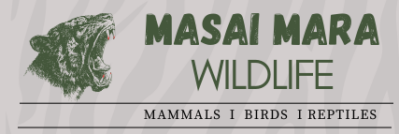Key giraffe conservation initiatives are essential for protecting giraffes, particularly the endangered Masai giraffe subspecies, and ensuring their survival across Africa. These initiatives target habitat preservation, anti-poaching efforts, community engagement, and research. Here are some of the most significant giraffe conservation initiatives:
1. Giraffe Conservation Foundation (GCF)
- Focus: The Giraffe Conservation Foundation is the only non-profit organization dedicated solely to giraffe conservation. It works across Africa to secure the future of giraffes in the wild through research, conservation, education, and management.
- Initiatives:
- Twiga Tracker Program: This is the largest giraffe GPS satellite tracking initiative, which monitors giraffe movement, behavior, and ecology across multiple African countries to understand their conservation needs.
- Conservation Translocations: GCF has translocated giraffes from areas of low conservation value or conflict to safe habitats where populations can thrive.
- Community-Based Conservation: GCF works with local communities to raise awareness about giraffes and develop sustainable practices to protect them.
2. Kenya Wildlife Service (KWS)
- Focus: KWS is responsible for conserving and managing Kenya’s wildlife, including giraffes, and their habitats.
- Initiatives:
- Protected Areas and Conservancies: KWS oversees national parks, reserves, and conservancies where giraffes are protected. They collaborate with community-led conservancies to ensure wildlife protection in areas like the Maasai Mara and Laikipia.
- Anti-Poaching Operations: KWS actively works to combat poaching through patrols, intelligence gathering, and law enforcement, helping reduce illegal hunting of giraffes and other wildlife.
3. Maasai Mara Wildlife Conservancies Association (MMWCA)
- Focus: MMWCA is a collaboration between the Maasai Mara Conservancies and the local Maasai community to conserve wildlife and promote sustainable land use.
- Initiatives:
- Community-Based Conservancies: MMWCA supports the creation and management of wildlife conservancies that allow local Maasai landowners to benefit from wildlife conservation through tourism revenue and other incentives.
- Giraffe Conservation: MMWCA engages local communities in giraffe monitoring and protection efforts, helping safeguard critical giraffe populations in the Mara region.
4. Twiga Walinzi (Giraffe Guards) Program
- Focus: This program, led by the San Diego Zoo Global in collaboration with Kenyan partners, focuses on the conservation of reticulated giraffes in northern Kenya.
- Initiatives:
- Community Rangers: Local community members, called “Twiga Walinzi,” are trained to monitor giraffe populations, report on poaching incidents, and assist in rescue and rehabilitation efforts.
- Conservation Education: The program engages local communities through educational initiatives to raise awareness about giraffe conservation and the importance of wildlife protection.
5. Giraffe Species Survival Plan (SSP)
- Focus: This initiative is a collaborative effort among zoos, conservation organizations, and researchers to maintain genetically diverse giraffe populations in captivity and support their conservation in the wild.
- Initiatives:
- Ex-Situ Conservation: Zoos participating in the SSP manage giraffe populations to ensure genetic diversity, which is critical for potential reintroduction programs.
- Conservation Funding: SSP partners raise funds to support in-situ conservation efforts, including habitat restoration and anti-poaching activities.
6. Conservation Translocation Programs
- Focus: Translocations are essential to re-establish giraffe populations in areas where they have been extirpated or where populations are critically low.
- Initiatives:
- Masai Giraffe Translocations: Giraffe Conservation Foundation and partners have conducted successful translocation efforts in areas like the Masai Mara and Tsavo, ensuring the genetic diversity and population recovery of the Masai giraffe.
7. Habitat Protection and Restoration
- Focus: Protecting and restoring giraffe habitats is crucial, as habitat loss due to agriculture, urbanization, and infrastructure development is one of the major threats to giraffes.
- Initiatives:
- Protected Area Expansion: Many conservation initiatives focus on expanding protected areas and wildlife corridors that are critical for giraffes to roam and migrate safely.
- Restoration of Degraded Lands: In some regions, efforts are underway to restore degraded grasslands and woodlands that provide essential food and shelter for giraffes.
8. Conservation Through Sustainable Tourism
- Focus: Ecotourism has become an important tool for giraffe conservation, particularly in regions like the Maasai Mara and Serengeti, where tourists are drawn to giraffe sightings.
- Initiatives:
- Wildlife Conservancies: Many conservancies, like those in the Maasai Mara, are funded through tourism revenue. These funds are reinvested into wildlife conservation programs, including giraffe monitoring and anti-poaching operations.
- Community Tourism Partnerships: Partnerships between local communities and tourism operators ensure that communities benefit from wildlife protection, fostering a culture of conservation.
9. International Union for Conservation of Nature (IUCN) Red List and CITES Protection
- Focus: Giraffes are listed as vulnerable or endangered on the IUCN Red List, and certain giraffe subspecies, like the Masai giraffe, are included under CITES to regulate international trade.
- Initiatives:
- CITES Listing: International agreements help control the trade of giraffe parts and products, reducing the demand that fuels poaching.
- Red List Monitoring: Regular assessments of giraffe populations by IUCN inform global conservation strategies and direct funding toward the most critical areas.
10. Research and Monitoring Initiatives
- Focus: Research is critical to understanding giraffe behavior, ecology, and population trends, which guide conservation efforts.
- Initiatives:
- Photographic Mark-Recapture (PMR): This method is used to estimate giraffe populations by identifying individual giraffes through unique coat patterns. PMR studies, such as those conducted in the Maasai Mara, have provided essential data on giraffe calf survival and population dynamics.
- Satellite Tracking: GPS collars and satellite tracking help researchers monitor giraffe movements, habitat use, and interactions with predators and humans.
Conclusion:
Conservation initiatives aimed at protecting giraffes focus on habitat preservation, community engagement, anti-poaching efforts, and research. By addressing the key threats—such as habitat loss, poaching, and human-wildlife conflict—these initiatives aim to stabilize and increase giraffe populations, ensuring their long-term survival. These efforts are particularly important for endangered subspecies like the Masai giraffe, whose populations have suffered significant declines.
